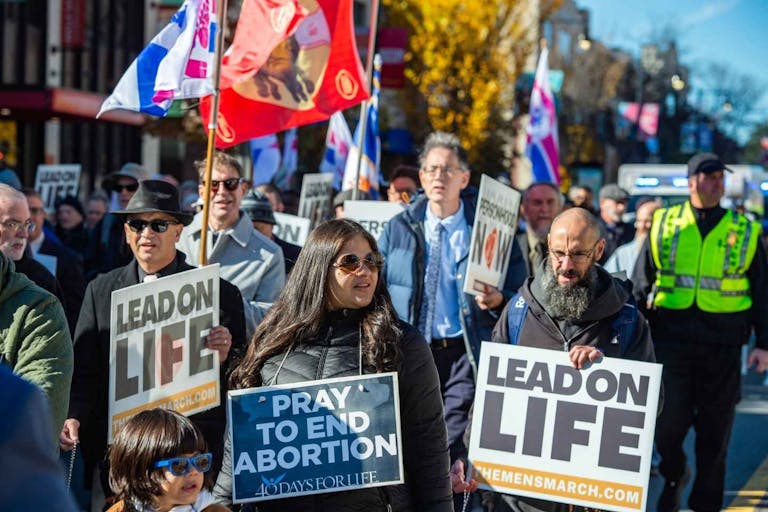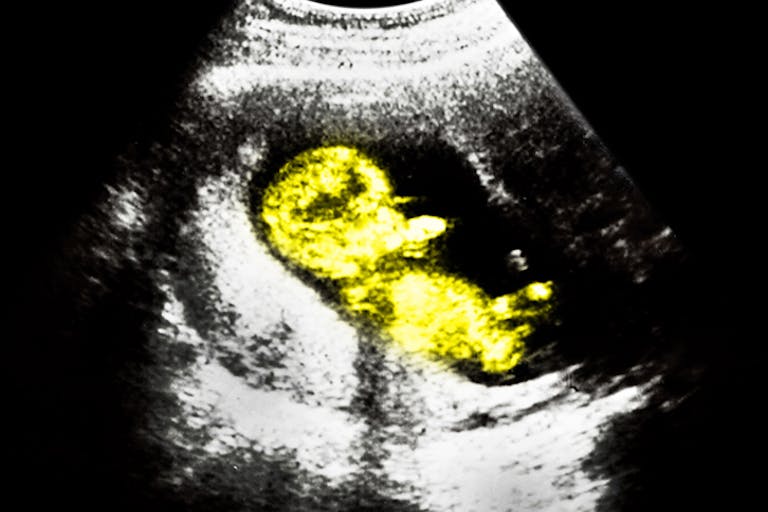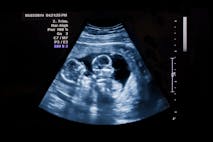
2025 Pro-Life Highlights: Celebrating a year of pro-life wins
Cassy Cooke
·
Scientific American publishes article calling heartbeat bills ‘immoral’
A new article published in Scientific American, a prestigious science magazine, argued that heartbeat laws — laws seeking to protect preborn children with detectable heartbeats from abortion, usually beginning around six weeks gestation — are neither morally nor legally sound. The magazine, which has historically included articles from notable scientists like Albert Einstein and Nikola Tesla, now appears to have chosen to deny science in order to advance a pro-abortion ideology.
Christina Han is a maternal-fetal medicine (MFM) specialist who is an outspoken abortion advocate, and Cara Heuser is an MFM specialist who also works as an abortionist in Salt Lake City. Together, they wrote an article in response to the Dobbs v. Jackson Women’s Health Organization Supreme Court decision, which overturned Roe v. Wade. Their article dehumanized preborn children, and denied the scientific reality of a preborn human being’s heartbeat.
“These so-called ‘fetal heartbeat laws’ and their underlying talking point that abortion ‘stops a beating heart’ are not only scientifically inaccurate, but they are also morally unsound,” they wrote. “As high-risk pregnancy experts, we appreciate that seeing or hearing cardiac activity is a meaningful moment for many people who are pregnant, and we share the joy of our patients who have a desired pregnancy. Two critical questions arise, however: Should a flicker of cardiac activity on an ultrasound limit options available to pregnant people, particularly those who desire or need to end their pregnancy? Furthermore, is a beating heart either a necessary (essential) or sufficient (adequate) standard upon which policy makers and cultural influencers such as antiabortion groups can decide the moral and legal status of either a human or a fetus?” (emphasis added)
The idea that a preborn human’s heartbeat is nothing more than meaningless “cardiac activity,” as Han and Heuser referred to it, is not an idea based in science. As doctors, both women undoubtedly know this. This is backed up in scientific literature, which states (emphasis added):
The human heart is one of the first organs to form and function during embryogenesis. By the end of gestational week 3, passive oxygen diffusion becomes insufficient to support metabolism of the developing embryo, and thus the fetal heart becomes vital for oxygen and nutrient distribution.
The initiation of the first heart beat via the primitive heart tube begins at gestational day 22, followed by active fetal blood circulation by the end of week 4.
The “University of New South Wales Embryology index on the cardiovascular system and heart development in human beings” additionally states, “In human embryos the heart begins to beat at about 22-23 days, with blood flow beginning in the 4th week. The heart is therefore one of the earliest differentiating and functioning organs” (emphasis added). The American Pregnancy Association likewise affirms the fact that a preborn child has a beating heart.
But what is the difference between a heartbeat and a meaningless twitch of cardiac muscle? The Endowment for Human Development (EHD), a non-partisan organization dedicated to improving health science education, and which holds a position of neutrality on controversial bioethical issues like abortion, has explained that the embryonic heartbeat has a purpose. Blood is actually being pumped through the preborn child’s body — just like in a fully-grown adult’s body — and without it, the preborn child could not receive the oxygen and nutrients necessary to live, grow, and thrive.

Yet Han and Heuser argue that because there isn’t a four-chambered heart until nine weeks gestation, it somehow isn’t a “real” heartbeat, even though blood is being actively pumped throughout the body.
Yet some people are born without four-chambered hearts, any many able to survive for longer periods of time without a heart transplant thanks to medical advancements; yet it is unlikely that Han and Heuser would argue that these people aren’t living. If that is the case, then the arbitrary heartbeat requirement they created apparently only applies to human beings yet to be born.
Han and Heuser then further attempt to dehumanize preborn children, writing that heartbeat legislation “misses a critical concept: a beating heart is not the only factor that determines legal status, moral status and personhood.” They argued that the lack of a heartbeat doesn’t make someone un-alive; in surgery, for example, the heart is sometimes stopped, but the person is not dead. “So, no, a heartbeat is not necessary for anyone to have the moral status of personhood,” they said, concluding, “Without dispute, a pregnant person retains their full moral status of personhood. Furthermore, declaring a single, electrically active and contractile organ, or the contractile cells it comes from, the stand-alone determinant of personhood is simply not valid. To force that pregnant person, who has unquestionable full legal and moral status, to continue a pregnancy and give birth against their will is clearly a gross violation of their personhood.”
It may surprise the authors, but the pro-life position does not disagree with the idea that it is not a heartbeat that makes one a living human organism. One is human by virtue of one’s unique human DNA. To deny a distinct human being in his or her natural, intended, early stage of life his or her right to life denies that human being his or her personhood.
The beating heart, however, is an easily identifiable sign that the preborn child is alive. After all, that child is alive before the heart starts beating, too — according to the most basic biological principles.
At the moment of fertilization, the preborn child is a single-celled organism — but he or she also already has their own unique DNA, with traits like sex, hair color, eye color, and countless more already determined. In just three weeks, her heart has begun beating. By five weeks, she has begun moving, and by six weeks, brain activity can be recorded. By week nine, she has grown from an organism consisting of just one cell, to nearly one billion cells. She can also sigh, swallow, suck her thumb, and grasp objects.
To destroy the singularity that is a newly-fertilized human life is to destroy that human entirely — all that this human being ever would or could become. That human being is not a “potential” life; that human being is simply a new life beginning on its continuum of human development.
By every biological benchmark of life, a preborn child is alive. The different terms used — zygote, embryo, fetus — are descriptors for the stage of life she is in, no different from a toddler, a teenager, or an adult. She is a living human being.
This does not mean the pregnant woman’s life does not matter, or that sometimes, it might be medically necessary to remove the child from her mother’s body before she is capable of surviving (while still attempting to sustain, not destroy, that child’s life). But it is never morally acceptable to take another human being’s life, simply because it is inconvenient, and the preborn child is weaker and more vulnerable. Someone’s life does not cease to matter simply because they are dependent on someone else; by that logic, any infant could be legally killed, too.
It is not “moral” to attack one human being’s “personhood” because someone else feels that their personhood matters more.
The article in Scientific American is a gross example of abandoning scientific fact to prop up pro-abortion ideology.
Live Action News is pro-life news and commentary from a pro-life perspective.
Contact editor@liveaction.org for questions, corrections, or if you are seeking permission to reprint any Live Action News content.
Guest Articles: To submit a guest article to Live Action News, email editor@liveaction.org with an attached Word document of 800-1000 words. Please also attach any photos relevant to your submission if applicable. If your submission is accepted for publication, you will be notified within three weeks. Guest articles are not compensated (see our Open License Agreement). Thank you for your interest in Live Action News!

Cassy Cooke
·
Analysis
Nancy Flanders
·
Newsbreak
Angeline Tan
·
Human Interest
Nancy Flanders
·
Issues
Nancy Flanders
·
Pop Culture
Cassy Cooke
·
Activism
Cassy Cooke
·
Pop Culture
Cassy Cooke
·
International
Cassy Cooke
·
Analysis
Cassy Cooke
·
Analysis
Cassy Cooke
·